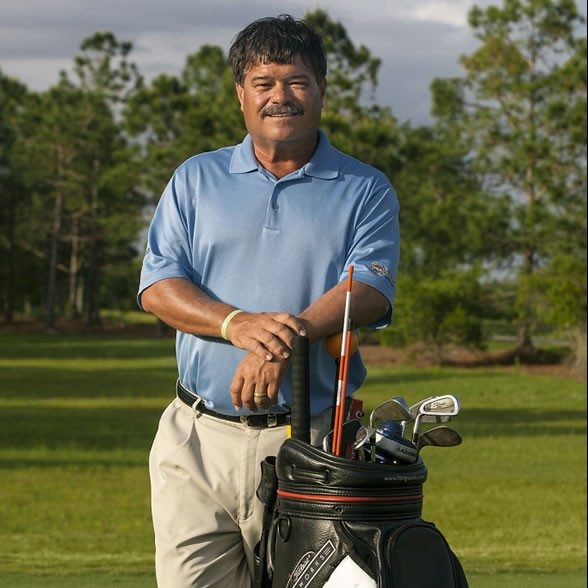Unpacking the Concept of Loft
With over 30 years of coaching golfers at all levels, including major winners, I’ve seen how crucial loft is to a golfer’s game. As a PGA Master Professional in Instruction, my approach is to simplify the technical aspects of golf, like loft. Welcome to our exploration of loft, a key factor in how high and far the ball flies off your driver.
Loft is not just a static number. It’s about the dynamic angle of the clubface at impact, known as effective loft. Understanding this can significantly improve your driving performance. Knowing these concepts ensures you not only know your club’s loft. But you master the effective loft for each swing.
The Science of Loft: Static vs. Effective
Let’s dive into the nitty-gritty of loft, starting with static loft. Imagine your golf club at rest; the angle between the shaft and the ground is your static loft. This angle is your club’s DNA, setting the stage for how the ball might soar off the tee. It’s like the launch angle for your golf ball, predicting its initial ascent as it takes flight.
Now, let’s shift gears to effective loft – the real game-changer during impact. This isn’t just about the club’s design but how you wield it in action. When the club strikes the ball, the loft could change based on your swing dynamics, grip, and stance. Effective loft is the actual angle that impacts the ball’s flight path, distance, and accuracy. It’s a dynamic figure, influenced by your swing and how the clubface meets the ball. Grasping the difference between static and effective loft is key for fine-tuning your shots, ensuring your golf ball doesn’t just fly, but flies right where you want it.
Decoding Effective Loft: Impact on Your Game
Now, let’s break down how effective loft plays a pivotal role in your golfing performance. During a swing, your effective loft is like a chameleon, constantly changing based on your movements. This transformation directly influences the ball’s flight path, distance, and accuracy. For instance, if you increase the loft at impact, perhaps by leaning back or flipping your wrists, the ball might take a higher trajectory but travel less distance.
Many golfers encounter issues like fades or slices, often the culprits behind those frustrating off-target shots. These are not just random mishaps; they’re directly tied to the effective loft. An increased loft at impact can open the clubface, leading the ball to curve away, robbing you of both distance and precision. Conversely, reducing the effective loft can lead to a lower, more penetrating ball flight, ideal for cutting through the wind and adding extra yards to your drive.
Understanding effective loft’s influence allows you to tweak your swing for better control and consistency. It’s about finding that sweet spot where your club’s loft and your swing mechanics align perfectly, optimizing the ball’s flight and ultimately enhancing your performance on the course.
Technical Insight: How to Measure and Adjust Effective Loft
Getting a handle on your effective loft starts with the right tools, and FlightScope is a golfer’s best friend for this task. This technology doesn’t just measure distance; it gives you a detailed look at your swing, including the effective loft at impact. By analyzing this data, you can pinpoint exactly how your clubface orientation is affecting your shots.
Now, how do you tweak your effective loft for the better? It’s time to talk about club settings and swing adjustments. With adjustable drivers, you can modify the static loft, but the real magic happens in your swing. One key technique is flattening the wrist at the top of your swing. This action can decrease the effective loft, leading to a squarer clubface at impact and a more penetrating ball flight.
Remember, it’s not about overhauling your swing overnight but making incremental adjustments. Experiment with your grip, stance, and wrist action to find the perfect combination that reduces your effective loft, straightens your shots, and ultimately lowers your scores.
Practical Drill: Reducing Effective Loft for Power
Ready to add some zest to your shots? Let’s tackle a drill that’ll help decrease your effective loft and boost the power behind your ball. This exercise focuses on the art of flattening your wrist, a move that’s crucial for squaring the clubface at impact.
Start by taking your regular stance with your driver in hand. As you reach the top of your swing, concentrate on flattening your lead wrist (left wrist for right-handed golfers, right wrist for left-handed golfers). Imagine you’re trying to press the palm of your hand towards the sky. This motion helps to open the clubface during the backswing but closes it as you come down, reducing the loft at the moment of impact.
Practice this move slowly at first, then integrate it into your full swing. The goal here is to create a feeling of compression and ensure the clubface is square to the ball, leading to shots that fly lower, faster, and farther. With regular practice, you’ll notice a significant improvement in the penetration of your drives, transforming your game one swing at a time.
Conclusion: Elevate Your Game with Effective Loft
Now that you’ve got a solid drill to work with, it’s crucial to put it into practice regularly. Notice the changes in your shot quality as you reduce your effective loft and gain more control and power. Golf is a journey of continuous improvement, where adapting and refining your skills makes all the difference.
Mastering effective loft is key to elevating your golf game. By understanding and adjusting your loft, you can control your ball’s flight, improve distance, and enhance accuracy. Remember, practice makes perfect. Use these insights and drills to refine your swing, and don’t hesitate to share your journey with our community.

